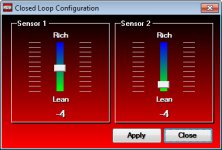Bob Denman
New member
:shocked: 24 to 26 mpg?
Something sure isn't right..
(Well; based on what preliminary knowledge we have...)
Let's talk about your bike...
How much do you weigh?
Where do you normally leave your windshield height set at?
What rpm level do you use as a shift point?
What is your normal cruising speed?
What fuel do you use?
Are you towing a trailer?
Is your bike in "Tow-Mode"?
How about tire pressures?
As a matter of reference: my 2010 RT was consistently in the 33 mpg range...
I weigh 205 "on the hoof and ready to go"
The windshield was a 25" off of a 2013, and it was always set about a quarter-inch off of the bottom stops
I shifted at 4800 -5200; depending on the gear
Normal cruising was at 55 mph on the two-lanes, and 63 mph on the interstates
93 octane
No trailer, and no Tow-Mode for me...
Tires: 19 psi front, and 28 rear
Oh! I had BRP's adjustable air deflectors, and they were always set in the center position...
Something sure isn't right..
(Well; based on what preliminary knowledge we have...)
Let's talk about your bike...
How much do you weigh?
Where do you normally leave your windshield height set at?
What rpm level do you use as a shift point?
What is your normal cruising speed?
What fuel do you use?
Are you towing a trailer?
Is your bike in "Tow-Mode"?
How about tire pressures?
As a matter of reference: my 2010 RT was consistently in the 33 mpg range...
I weigh 205 "on the hoof and ready to go"
The windshield was a 25" off of a 2013, and it was always set about a quarter-inch off of the bottom stops
I shifted at 4800 -5200; depending on the gear
Normal cruising was at 55 mph on the two-lanes, and 63 mph on the interstates
93 octane
No trailer, and no Tow-Mode for me...
Tires: 19 psi front, and 28 rear
Oh! I had BRP's adjustable air deflectors, and they were always set in the center position...

